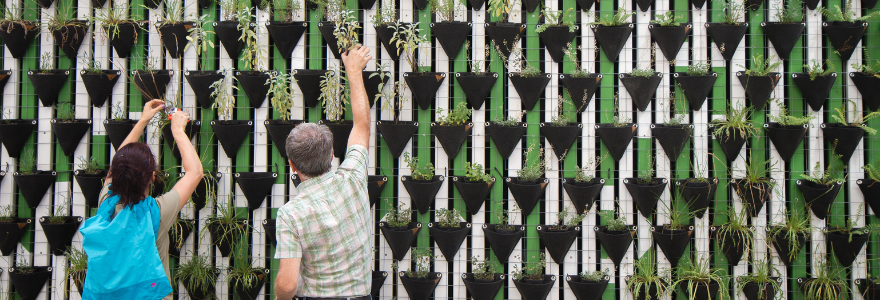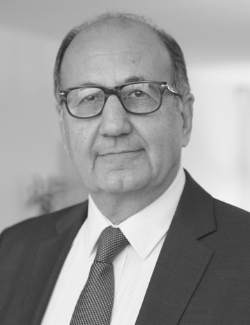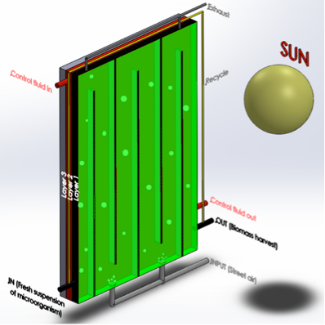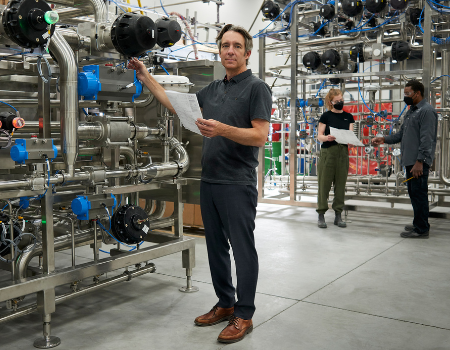Media
Contact
Communications Specialist
Faculty of Engineering
Spencer Engineering Building
Room 2072
Western University
Tel: 519-661-2111 ext. 87015
Email: engineeringcomms@uwo.ca
BFC Technologies partnership works towards smart, sustainable cities

Image from Unsplash
Western Engineering News | May 26, 2021
Urban areas cover less than 3% of the Earth’s surface but are responsible for an estimated 71% of the world’s energy-related carbon emission. Creating sustainable cities to be resilient to the impacts of climate change is an urgent matter — one that Western Engineering researchers and their industry partners are working hard to address.

Hassan Peerhossaini
Western Engineering researcher Hassan Peerhossaini focuses on a strain of microorganisms called Synechocystis, which can live in seawater, fresh water and even in wastewater. Synechocystis uses the energy of light to convert carbon dioxide and water into glucose, releasing oxygen in the process.
“The use of microorganisms to clean up contaminated environments provides a cheap and efficient alternative to the conventional treatment methods, which are often very energy-demanding,” said Peerhossaini. “This field of research can have an enormous impact on our daily lives and allows us to leave our planet clean for generations to come.”
In 2020, Peerhossaini established the Western Mechanics of Active Fluids and Bacterial Physics Lab to support world-class interdisciplinary research and study the behaviour of microorganisms, from their primary state to industrial and environmental applications. Microorganisms are cultivated in specialized reactors, known as photobioreactors (PBRs), which create an environment where waste is converted into valuable products, with an estimated market value of US$60 billion worldwide.
That’s where bio-tech company BFC Technologies Inc. comes in. The company’s collaboration with Western Engineering will focus on the development of bio-solar façades — flat-panel PBRs integrated directly into a building’s exterior. These bio-solar façades capture carbon dioxide emissions from buildings or nearby streets and convert it to value-added molecules, while simultaneously reducing building heating and cooling loads through thermal buffering.

Schematic diagram of solar biofaçade
Industrial bio-façades require cutting-edge technology in photobioreactor design and fabrication, thermal engineering, building energy technology, structural engineering, and architecture.
“BFC’s expertise perfectly matches the innovative techniques needed for the design and construction of bio-solar façades, and can help accelerate the process to integrate the new technology into society, where it will make an impact,” said Peerhossaini.
Ontario-based BFC Technologies was founded in 2003 to help innovators in the bio-tech, pharmaceutical, food, consumer product, and nuclear sectors deliver products to patients and consumers. The company’s design-build approach allows its clients to prescribe the technology they need instead of adapting their process to available technology.

Ron Lalonde - photo taken at BFC
The partnership was sparked in 2019, when BFC Technologies’ vice president, Western Engineering alumnus Ron Lalonde, BESc’94 and BA’01, attended a lecture delivered by Peerhossaini as part of Western Engineering’s Homecoming celebration.
“As Dr. Peerhossaini described the technology, I thought, ‘We can build that,’” said Lalonde. “The desire to support the technology comes from a personal and professional place. My young daughter is concerned with the state of the environment, and I want to be able to tell her how we are part of the solution.”
Lalonde notes the Western Engineering partnership marks the first time BFC will help develop a core technology, rather than an enabling technology. The collaboration will realize the unique environmental benefits of bio-solar façades, adding a new tool to reduce our impact on the environment.
“The team at BFC is proud of the difference we make in the industries we serve today," said Lalonde. "Our staff is also passionate about the environment, and we see this as a new opportunity to make a difference. We are excited to see where the partnership takes us.”

